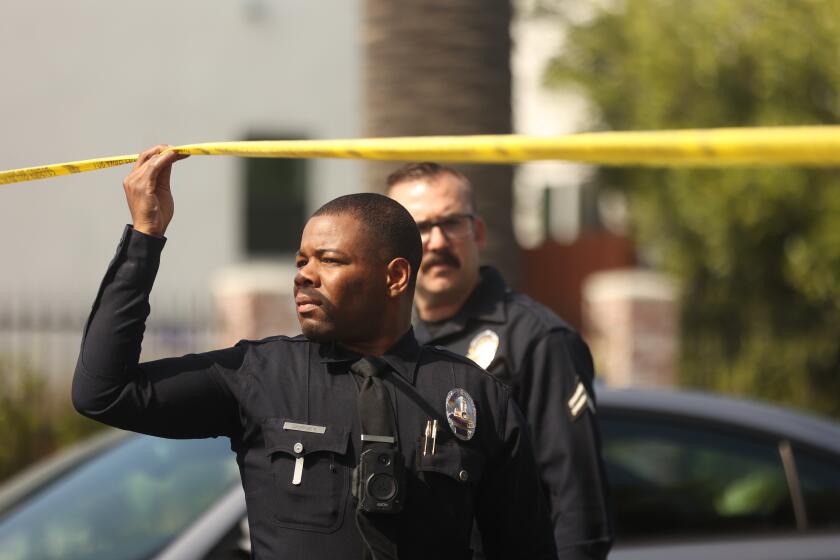Miracle Mile South Buildings Dispute: The Past vs. Passe : Redevelopment: An eight-year fight between landlords and tenants heats up again over a proposed ‘historic preservation zone.’
- Share via
When it comes to Miracle Mile buildings, what some see as historic others deem dilapidated.
That, in essence, is the issue fueling an eight-year dispute between landlords and tenants over a proposal by city planners to turn the Miracle Mile South neighborhood into a “historic preservation overlay zone.” Such a designation would force owners and developers to seek consent from a city-sanctioned association before altering or demolishing the buildings, some of which date to the 1920s.
Tenants concerned about rapid redevelopment during the mid-1980s real estate boom unsuccessfully rallied for such a zone.
Now, a pro-preservation group is gearing up for another fight June 9 at a city planning department hearing. The proposal will then go before the City Council.
“At some point in the near future, we’re going to have nothing left of our beautiful neighborhood, just some stucco buildings with big balloon signs that say, ‘Apartments for Rent,’ ” said Denise Robb, founder of the Miracle Mile Action Committee, a residents group that supports the proposed zone.
Proponents argue that such a designation, which would cover Miracle Mile South bounded by Detroit Street on the east, Hauser Boulevard on the west, 3rd Street on the north and Wilshire Boulevard on the south, would protect buildings and neighborhood character while preserving owners’ rights to make needed changes.
However, some landlords say that the zone would lower property values, add a useless layer of bureaucracy and preserve buildings of questionable significance.
“There’s no reason for a building from 1929 to be a historical monument,” said Horst Beil, a member of the Miracle Mile Apartment & Commercial Owners Assn. “I was born in Germany, and my town goes back thousands of years.”
Stefanos Polyzoides, a Los Angeles architect and USC professor, said that preservation efforts are necessary to ensure well-planned communities. “The more this city becomes like Swiss cheese, with open lots everywhere, the more uninviting it becomes,” he said.
The zone, which would become the city’s eighth, would include a number of Depression-era buildings designed by architects such as Max Maltzman and Milton Black, said Nancy Fernandez of the city Cultural Heritage Commission. Each zone has an association commission that reviews construction plans. Appeals are heard by the Planning Commission.
A motion for a Miracle Mile South historic zone died in the City Council in 1987. About that time, a spate of redevelopment ultimately led to the demolition of about 50 apartment buildings in the area over several years. (A zone covering Miracle Mile North, which is north of 3rd Street, south of Beverly Boulevard, west of La Brea Avenue and east of Gardner Street, was passed in 1990).
Robb and others said the issue has apparently been revived because of residents’ dissatisfaction with 1992 “downzoning” rules, which sought to control runaway redevelopment by lowering the number of units built per lot. Residents fear that the new regulations are too weak to curb further rebuilding.
More to Read
Sign up for Essential California
The most important California stories and recommendations in your inbox every morning.
You may occasionally receive promotional content from the Los Angeles Times.














